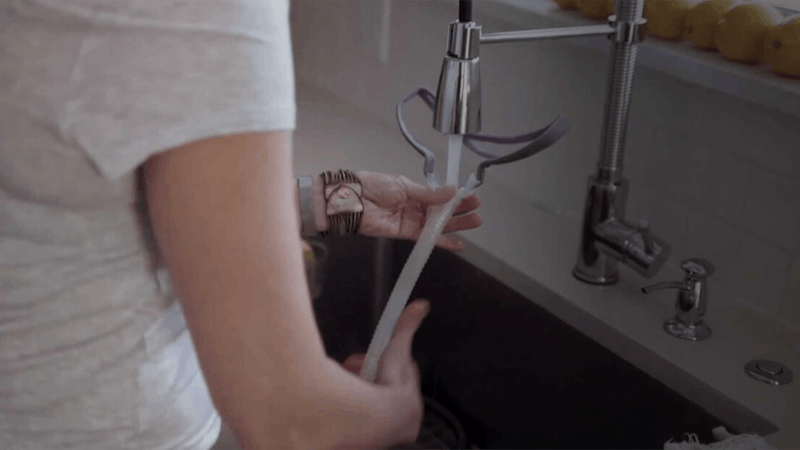
Originally posted on VeryWell by Brandon Peters, MD
When you’re just starting to use a continuous positive airway pressure (CPAP) machine to treat sleep apnea, it’s common to worry about the risk of infection from the device. There is a potential risk of infection, including sinus infections and pneumonia, from using a CPAP machine.
But with proper cleaning steps on a regular basis and the use of filters, distilled water in a heated humidifier, and heated tubing, you can reduce your chances of getting sick.
The Dangers of Infection
The CPAP itself is initially a sterile device. The plastic and metal parts will not cause illness on their own, and germs will not be present there when the machine is new.
Once you start using it, any germs inside the mask, tubing, or device are your germs. Therefore, you are at a low risk of acquiring a new infection from a CPAP if you are the only one using your device.1 The bugs—whether they are bacteria or viruses—are ones that you put there via breathing, and your body has already reached a truce with them.
Though there may be a reasonable concern for potential infection from the use of CPAP equipment, there is little research in adults supporting such an association.1 However, there have been several case reports in scientific literature of doctors reporting Legionella pneumonia and Streptococcus infection associated with home CPAP machine use.2
There have also been a few reports of eye irritation and ulceration occurring, possibly related to masks leaking air into the eyes, but the cause-and-effect relationship is not clear.
Moreover, some research actually suggests that regular CPAP use in fact reduces inflammation and the risk for infection in the nasal passage.3 Cells associated with these phenomena are seen less often in the noses of compliant users of the therapy.
In conclusion, more research is needed to uncover the relationship between CPAP therapy and rates of infection.
Fungal and Mold Risks
The CPAP has some “creature features” to make it more comfortable to use. In particular, the heated humidifier and heated tubing may make the air more warm and moist. This decreases mouth and nose dryness.
Decreased dryness may actually reduce the risk of potential infection, and it improves tolerance to the therapy. (Inflammation along the airway often improves with CPAP use.)
However, there are organisms that also love a warm, humid environment. In particular, fungus, yeast, and mold would love to hang out in such a place. Dangerous molds could also establish themselves in the equipment. These organisms could potentially be harmful to you.
This may lead to irritation of the airways and lungs, contributing to cough or possibly even an infection like bronchitis, pneumonia, or inflammation of the lungs called pneumonitis. The air pressure may blow these organisms directly into your lungs. It sounds scary!
If your CPAP is not kept clean and excess moisture is allowed to sit in the tubing or humidifier, you might be at risk of developing a fungal or yeast colonization.
Take a deep breath. Large studies have not been performed, and cases of this occurring have not been reported in the literature. The risk is likely extremely low.4 The use of a humidifier and adequate hygiene seems to reduce these risks.
If water is left in the device for an extended period of time without use, mold is more likely to form. Therefore, the device should not be stored with water left in it, especially in an environment that might promote such growth (like leaving the CPAP in a shed or garage for months or years and then resuming its use).
How to Avoid Infection
In order to reduce the theoretical risk of infection or exposure to unwanted fungi or molds, there are certain steps that you can take.
Clean your CPAP as often as you should with hot water and dish soap.5 The equipment manufacturers suggest daily cleaning. In actual practice, it is recommended that this be done at least weekly, depending on your environment. It is not necessary to use an expensive CPAP sanitizer device to reduce the risk of infection that is simply not there.
If you are sick with a cold or flu, clean your mask, tubing, and device thoroughly to remove mucus and other undesirable residual discharges from the illness. This basic hygiene can help to avoid any unpleasant smells from developing.
Do not let water or moisture remain in the equipment for prolonged periods (more than a few days unused). Clean and dry it out completely. Use a heated humidifier and heated tubing to reduce condensation. Modern devices can circulate air to help dry out the tubing after use has concluded.
Use distilled water in the humidifier to reduce your risk of infection by amoeba in certain regions such as Louisiana.6 If you don’t trust the local water supply, always err on the side of using distilled water. This can also avoid the accumulation of minerals inside the water chamber.
Replace your supplies, including machine filters, as recommended. Filters have been shown to reduce the spread of bacteria within the device. Masks should be replaced at least every three months and filters and mask cushions (the part that touches your face) should be changed from every two weeks to monthly.7
Do not share your equipment with others. Do not purchase or accept used equipment, especially used masks and tubing.
By taking these simple steps, you can further reduce the risk of infection and ensure that you get the healthful benefits you expect from your treatment.
Do You Need a CPAP Sanitizer?
It is not necessary to spend hundreds of dollars on a specialized CPAP sanitizer, such as the SoClean unit that retails for $299. There is no evidence that these cleaners reduce the risk of infection.
Though it might make it easier to keep things clean on a daily basis, the cost likely outweighs any potential benefit. Save your money and avoid this expenditure. Instead, commit yourself to cleaning your equipment with soap and hot water at least weekly.
A Word From Verywell
It is important to keep your CPAP equipment clean. This will avoid any potential risks associated with its use. Beyond cleaning the equipment regularly, make certain to replace your supplies as often as insurance will allow. If you need further guidance, talk to your physician, who can provide additional instruction and resources.

